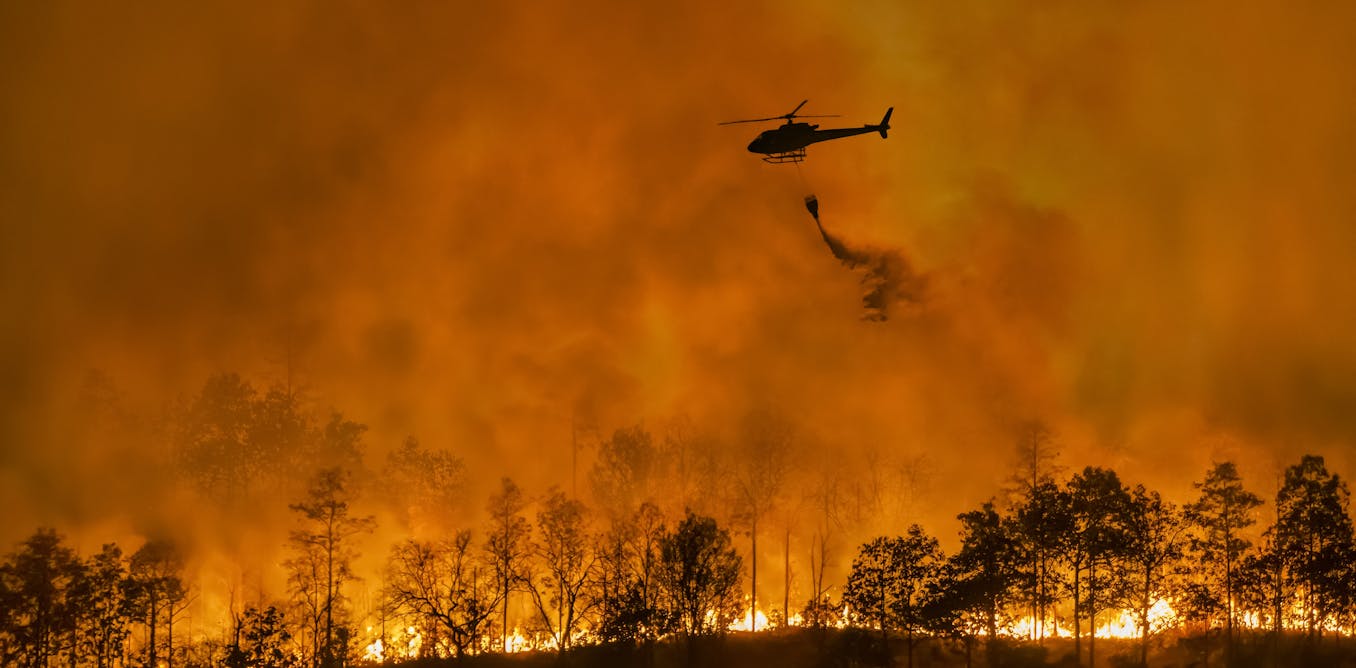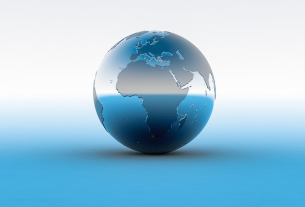In the past months, the planet has experienced the hottest months of June and August, boreal summer and day on record, with a global average temperature of 17.16°C on 22 July. While many have been getting on with their lives as best as they can, there are many more who are feeling the heat, as levels of climate anxiety continue to rise. At risk are people experiencing climate impacts in the Global South, but also professionals in the Earth sciences documenting and modelling them.
So, how can we channel our alarm in a way that doesn’t paralyse us, but propel us into action? To answer this question, The Conversation Europe spoke to one of the world’s most public-facing climate scientists, the Vice-Chair of the Intergovernmental Panel on Climate Change (IPCC), Diána Ürge-Vorsatz.
Could you start off by describing your work? According to you, what have been the highlights of your career as a climate scientist?
So I mostly work in the area of energy efficiency. I have done a lot of modelling, including to demonstrate how higher efficiency buildings could reduce carbon emissions. Among others, I have alerted the world of what we call the carbon lock-in risks of inefficient building retrofits — when fossil fuel-intensive systems perpetuate, delay, or prevent the transition to low-carbon alternatives.
I’ve always tried to concentrate on solutions which not only allow us to solve environmental issues, but also to increase human well-being and meet other societal goals. That’s because I come from a country [Hungary] where I see that while the environment and climate change are important, they typically play second fiddle to other priorities. Hence, I believe we have to solve these things in a way that makes it worthwhile.
Fourni par l’auteur
My work therefore prompted lawmakers to revise the EU’s legislation to boost building energy efficiency – the Energy Performance of Buildings Directive – in 2010. On the first day the Fidesz government was reelected that year, I showed them how many jobs could be created through high efficiency building retrofits. Based on our research, they committed that the entire building stock would be refurbished to slash energy consumption by 60 %, which would have been really very ambitious, the first such commitment in the world. Unfortunately, a few months later, they changed their direction and they rather went into other energy policy priorities.
Do you also research alarming climate scenarios? You told me the other day that you were particularly concerned with the potential collapse of Atlantic Meridional Overturning Circulation (AMOC) at the moment
That’s one of my concerns, yes, because it’s amongst the tipping points that would exert its impact the earliest.
If we look at other Earth system tipping points, most of them require a century, several centuries, if not several millennia until they exert a full impact. If AMOC collapses, it would exert its full impact within two to three decades, potentially. These are very strong impacts predicted clearly, on Europe as well as other regions. More and more papers have shown evidence that its collapse could already be underway. That’s definitely been alarming.
When you started on this career path, would you describe yourself as prey to eco-anxiety? And if not, was there a turning point when it appeared?
No, when I started I don’t think we had any knowledge that would have amounted to any existential threat, and it was still not so tangible that so many things could go wrong.
I was studying for my PhD at UCLA, at UC Berkeley from 1992-96. In the LA Times, there was a two page advertisement calling for artists to design artwork that would scare anyone away, which they could put above the Yucca Mountain deep high-level based nuclear repository so that even if people didn’t speak English or they didn’t understand our script anymore, they could still understand that there was something really dangerous under that.
At that point, I remember thinking: “Oh my God, if you just can’t dig or walk wherever you want anymore, that’s just wrong. We cannot do that to future generations.”
Then there’s the never-ending news cycle, making it hard to pinpoint specific moments that alarm you. One that comes to mind has been the discovery over time that forever chemicals – Per and polyfluoroalkyl substances (PFAS) – are everywhere, even in the most remote parts of the earth and rain is no longer of drinking water quality even in Antarctica. This isn’t going to go away — precisely because PFAS are what we call forever chemicals. We will never be able to vacuum clean the planet from PFAS. Likewise with microplastics. When you start looking ahead with your eyes open, it can be really scary.
And how do you experience the intimate knowledge of that alarming data on the one hand, and the public’s, and above all the elites’, climate inaction on the other?
Well, I wouldn’t quite call it “climate inaction”. It’s easy to dwell on the idea that the glass is half empty. But in fact, the glass is half full. Lots has been done since the 2015 Paris Agreement, which was itself a miracle.
You were there when the deal was struck, weren’t you? Could you tell us what it was like?
Well, it was truly euphoric, because before that, if a scientist dared mentioning [the threshold of] 1.5°C [of warming above pre-industrial levels], you were a tree-hugger and an advocate, not a scientist. You did not get funding.
And suddenly that became a political reality, or at least a political goal. I think that was really amazing for me because that time we didn’t have science clearly backing that you actually could achieve 1.5°C. So in the run-up to the Paris Agreement, the United Nations Framework Convention on Climate Change (UNFCCC) asked the IPCC to produce a report on 1.5°C. I remember talking about it with colleagues at the time, who told me: “That’s crazy, this train is gone, let’s not do it”.
Then the months went by and and those voices faded. By the time we got to the plenary meeting in January there was not a single voice saying “We shouldn’t do this report”. Scientists changed course and put so much effort in on trying to say “Okay can this be done well? Let’s actually see”. Then they ran their models to figure out that actually not only can it be done — but there are so many ways we can get there. Yes, I know that it’s now increasingly unlikely that we still will meet it, but it still created a lot of momentum.
One fact that we don’t emphasize enough: we have prevented the world from warming by five to six degrees by the end of the century, and we are now at worst saying perhaps four degrees, but more likely 2.5°C to 3.5°C.
How do you communicate with your children about the climate crisis? For example, are there things that you choose not to tell them in order to protect them?
I don’t hide anything from them. We quite frequently talk about the gravity of the situation because I cannot help bearing on them in the evening all the negative experiences and facts I learned during the day and I just have to unload these for them at dinners and so on.
One of my daughters did experience quite severe environmental anxiety for almost two years when she was about nine years old. She had come with me to a TV shooting and they allowed her into the studio. And before my interview, they just played this intense clip about storms and fires – typical climate impacts. But after that, she was really very afraid for a long time.
How did that fear translate itself?
She couldn’t sleep very well. She was constantly afraid physically. She would tell me: “My god, is this going to burn around us? Are we going to have floods?”
And it’s that a nine year old cannot, of course, fully comprehend yet how these risks will unfold in the future. I think she was put in this state of fear and anxiety. So that’s why it was also hard to manage because it wasn’t anything concrete or anything that she could verbally express or phrase nicely.
And I couldn’t say, “Look darling, it’s not going to happen.”
And how did she manage to surface from that state of paralysis?
After a while, I think she understood that it wasn’t yet threatening her life. But all of my children are still concerned and many of them want to contribute to fighting climate change in some way.
For example, my eldest daughter was studying medicine, but after her second year, she spent the entire summer in tears. She was deeply passionate about climate action and believed there were only two paths forward. Either she could still save the planet by becoming an architect to design zero-energy buildings, or, if it was too late, she should focus on mitigating the damage by remaining in medicine. After two months of struggling with this dilemma, she abandoned her dream of architecture and decided to continue with medical school. It was heartbreaking for me to see how little hope they had of solving the climate crisis.
What would your advice be for parents whose children are suffering from eco-anxiety?
I think the best way is to turn anxiety into action — to explain to them that they have and we still have agency. Even though we are small, we have a very important impact. We can vote. We can choose a profession where we can change the world. We can be role models and we can influence our peers through social media and many other ways.
So if we tell them the five scenarios that the IPCC presents (investor, consumer, citizen, role model, professional) in the 6th Assessment Report as individual roles we can play to curb climate change, it’s not only through whether we choose to take a plastic bag or not. The future isn’t something that happens to us, but in our hands. We are all part of systems where each of us can influence more than we think.
If your children were to start striking for the climate, would you support them?
Yes, I think protests are one of the very important ways how we can have an impact. Besides, children often don’t have any other tools. And that’s why they also feel anxiety because they don’t yet have influence. They don’t have any money to spend, or any voting rights yet. They don’t yet have a profession through which they can influence the world. They feel powerless.
And often children’s only power is to protest. If we give them other means to where they can influence the processes, that’d be even better.



